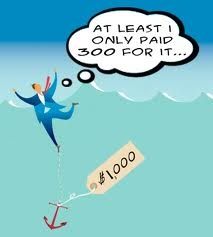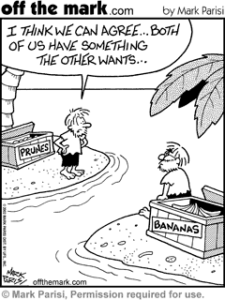23, 2017

Is it a good idea to offer a discount for the launch of a Saas B2B service?
Question:
I’m wondering if offering something like a 50% rebate, available only at launch time would be a good idea ? The aim is to make people subscribe now and not delay their decision.
Answer:
Companies still do launches?
Assumably, you’ve gone through the Customer Discovery and Customer Development process, which means you have hard data to support pricing expectations because you already have users paying for your beta/pre-launch version (a.k.a. your MVP in Lean Startup vernacular…).
If you’re launching blind, save your resources and retreat back to Customer Development activity. During Customer Development, begin at your planned discounted price (or lower) for the first few customers then migrate your ask price upwards with each new customer you board with your pre-launch version. When price becomes a real issue in advancing the sale or it appears that higher prices requires additional executive approvals at your target prospects that extend the sales timeline, you know you’ve hit your limit. (Of course, you may choose to deal with the additional decision layers and longer timelines. It’s just a matter of time-to-close and win rates – metrics you also need to measure and optimize for your business.)

Whether you strictly follow The Lean Startup Methodology or not, you absolutely must validate your market, product, and price before a launch.
Do not mistake price as a real objection. Price is never the reason for purchasing or not purchasing. Price is a benchmark for customer perceived value. If a customer balks at price, they are telling you that you have not yet conveyed the perceived value necessary to justify the expenditure. The price-to-value metric varies from industry to industry and individual to individual.This is a primary discovery you must make in your Customer Discovery and Customer Development phases.
But if you must offer a discount…
Explain clearly to your customers that this is “Launch Pricing.” Additionally, explain that the initial pricing is only available for the first year (or first six months). Document this into your user agreement so that there are no questions at renewal for both your local users and their vendor managers. I’ve personally found myself in situations where a verbal agreement was made with the software users and local managers, but at renewal time, the vendor manager based renewal pricing solely on past pricing. Worse, vendor managers may be evaluated based on discounts negotiated with vendors. In the case of Launch Pricing, you’ll be fighting just to retain current pricing at renewal let alone pushing the price up to “List Price.”
Rest assured that you’ll receive pushback at renewal time regardless. The client may either request an extension of your Launch Pricing, or seek other concessions such as upgraded service, additional service and training beyond your normal standards, or additional seat licenses.
Have a Sales Question?
Grab a time to chat with Scott here.
It’s likely that you will introduce new features and functionality throughout the product’s life, so log these features to have an account what how much the product is enhanced between Launch Pricing and renewal, supporting the move to List Price.
Ask for something in return. Software is a non-rivalrous good – you cannot pull the “I’ve got another person coming by this afternoon who’s also interested in this car, and it’s the last on the lot like it” trick so you need to create scarcity and conditions another way.
- Create a “New Subscribers Cohort.” Explain to customers that in order to properly support customers at this price, you are going to bring them through implementation and training as a class. Limit your New Subscriber Cohort to 5 or 10 companies, thus creating scarcity for your non-rivalrous good at Launch Pricing.
- Host monthly calls. In return for the Launch Pricing, require monthly calls to ask about client satisfaction, feature ideas, and cases studies.
- Get video and written testimonials after three months.
- Require two hours of work at your next trade show booth. Ask for them to work at a trade show exhibit so you have a live testimonial for booth traffic.
- Use of their names and quotes in your launch press release.

You should consider these ideas for all new customers at special or regular pricing, but particularly at Launch Pricing so that there is a cost to the customer in exchange for a lower price. You may find that some customers may appreciate these obligations but will instead pay you full price to avoid them.
Finally, prepare to deal with companies that choose not to buy at launch. They may simply wanted to see how the product does before jumping in or they have internal purchasing barriers at the time of your launch such as budget constraints or recent executive leadership changes hindering major purchasing decisions. When they are ready to buy, they may well ask or even require that you honor your Launch Pricing, especially if they were in your sales pipeline during launch. You’ll then either need to honor that price with the client obligations (or without) or risk a shaky start to the relationship.

While your Launch Price objective is to create perceived value for those customers that take advantage of your Launch Pricing, instead you could be anchoring the market to your lower price instead. Read about “Anchoring Effects” here: Anchoring.
Now ask yourself if it’s really worth the cost to discount your price at launch.
**This Q&A article was originally posted on Quora. Check out Scott’s Quora page here.
